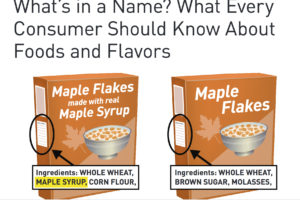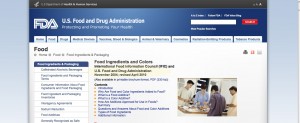I’m always wary when I see a listing for “natural flavors” on an ingredient list. If it’s so natural, why don’t they just say “vanilla beans,” or “cola beans,” or “strawberries.” Because you often won’t find any trace of anything natural in an ingredient list for “natural flavors,” that’s why.
My friend, Nonna Joann Bruso, publishes an informative little e-zine about raising healthy eaters called “Baby Bites.” In her latest issue she lists all the ingredients that make up the “natural flavors” in a strawberry milkshake. Let me reprise it here for you:
Amyl acetate, amyl butyrate, amyl valerate, anethol, anisyl formate, benzyl acetate, benzyl isobutyrate, butyric acid, cinnamyl isobutyrate, cinnamyl valerate, cognac essential oil, diacetyl, dipropyl ketone, ethyl acetate, ethyl amyl ketone, ethyl butyrate, ethyl cinnamate, ethyl heptanoate, ethyl heptylate, ethyl lactate, ethyl methylphenylglycidate, ethyl nitrate, ethyl propionate, ethyl valerate, heliotropin, hydroxyphenyl-2-butanone (10 percent solution in alcohol), a-ionone, isobutyl anthranilate, isobutyl butyrate, lemon essential oil, maltol, 4-methylacetophenone, methyl anthranilate, methyl benzoate, methyl cinnamate, methyl heptine carbonate, methyl naphthyl ketone, methyl salicylate, mint essential oil, neroli essential oil, nerolin, neryl isobutyrate, orris butter, phenethyl alcohol, rose, rum ether, g-undecalactone, vanillin, and solvent.
Bleeeeeeech!
Why oh why do companies think they can improve on nature by substituting natural foods for a compound of more than 50 chemicals and derivatives? You’d think it would be a lot more work to develop this mixture than it would be just to do something really radical, like blend up some strawberries?
But even more horrifying to me is the utter lack of regard for the consumer of these chemical mixes. These ingredients include petroleum byproducts commonly used in products like nailpolish, tanning oils, perfumes, etc… Some of these ingredients, like butyric acid, are known to be cancer-causing, yet they are still included in this “natural” strawberry flavoring.
Even vanillin is synthesized in a petrochemical plant in China or Louisiana to mimic the flavor of real vanilla. Without the real vanilla, of course.
You can argue that you might receive a really small amount of these substances in a single strawberry milkshake. Maybe. But add up all the things you might be eating every day that contain artificial or “natural” flavors and colors, and that’s a lot of toxins to accumulate in your body. Soda pop, snack cakes, cheese-flavored crackers, maple-flavored syrups, mainstream ice creams, cereals, juices… need I go on?
My goal is always to stick to whole foods as much as possible to avoid these hidden killers, but when I do purchase prepared foods I look for labels that list fewer ingredients where all of them are easily identifiable. Unfortunately, the FDA allows companies to hide that ugly list above under the catch-all ingredient of “natural flavors.”
Now you know, though, and you won’t be fooled so easily.





